The Delage D12 French Hypercar Aims To Make History With World Speed Record
Combining a naturally aspirated V12 with an electric motor and an F1 suspension, the Delage D12 seeks to break the world record lap time around Nürburgring.
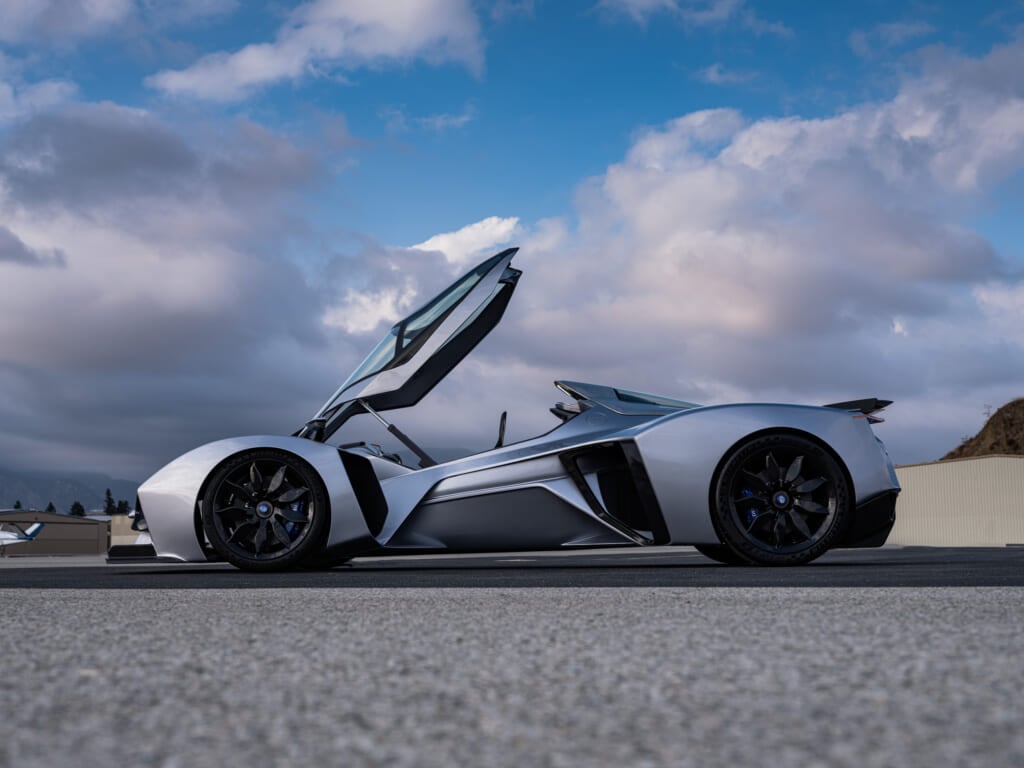
In 1874 Pierre Louis Adolphe Delage was born in the verdant countryside of Cognac, France. Among some of the finest vineyards in the world the watchmaker’s son studied the sciences, graduating from the nearby Ecole de Arts & Metiers with a degree in engineering. After securing financial backing in 1905 he founded Delage, which would go on to find great fame in the world of motorsports.
With a fleet of hand-built, V12-powered racers, Delage claimed Grand Prix wreaths and world speed records, peaking in 1927 when his Type 15 S 8 crossed four European Grand Prix checkered flags, winning his eponymous nameplate the World Championship and the Legion d’Honneur for his driver Robert Benoist.
Sadly Delage’s halcyon years would be short-lived. Despite building some of the most luxurious and expensive cars the world had ever seen, the knockout combo of the Great Depression and Word War II conspired to kill the marque. By the early ’50s, after being sold to Gallic peers Delahaye, Delage faded to black.
Until now, that is.
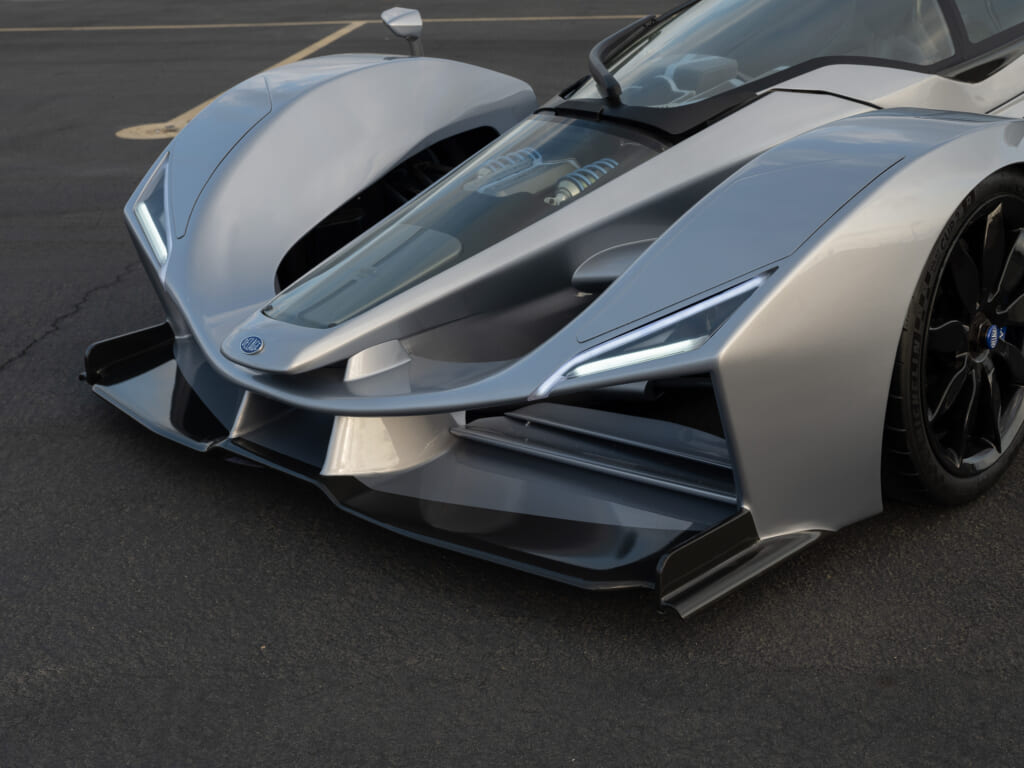
“Because I’m French, Delage was really an obvious choice,” Laurent Tapie explains from his headquarters in Magny-Cours. A serial entrepreneur, the son of businessman and politician Bernard Tapie—best known for reviving the moribund Adidas label in the early 90s, and being owner of the Champions League-winning Olympique de Marseille football club—charged himself with resurrecting the storied marque.
“The only two brands in French history that were ever world champion in Grand Prix are Bugatti and Delage, no one else,” he reminds us. “Delage set several world records of speed, and in the first half of the 20th Century won more Prix d’Elegance than any other brand in the world.
“Nobody remembers that France used to be the number one country for luxury cars until the Second World War,” he continues with a hint of exasperation. “We were selling more prestigious cars than the English, the German, the Italians. We were number one!”
Speaking with Tapie for only 20 minutes, it quickly becomes apparent his goal is not just to return his nameplate to the apex of global motoring, but the French flag as well. “Delage still remains one of the most prestigious brands in history,” he urges, “we just need to relive this past, and remind people of it.”
Rebirth of a Legend
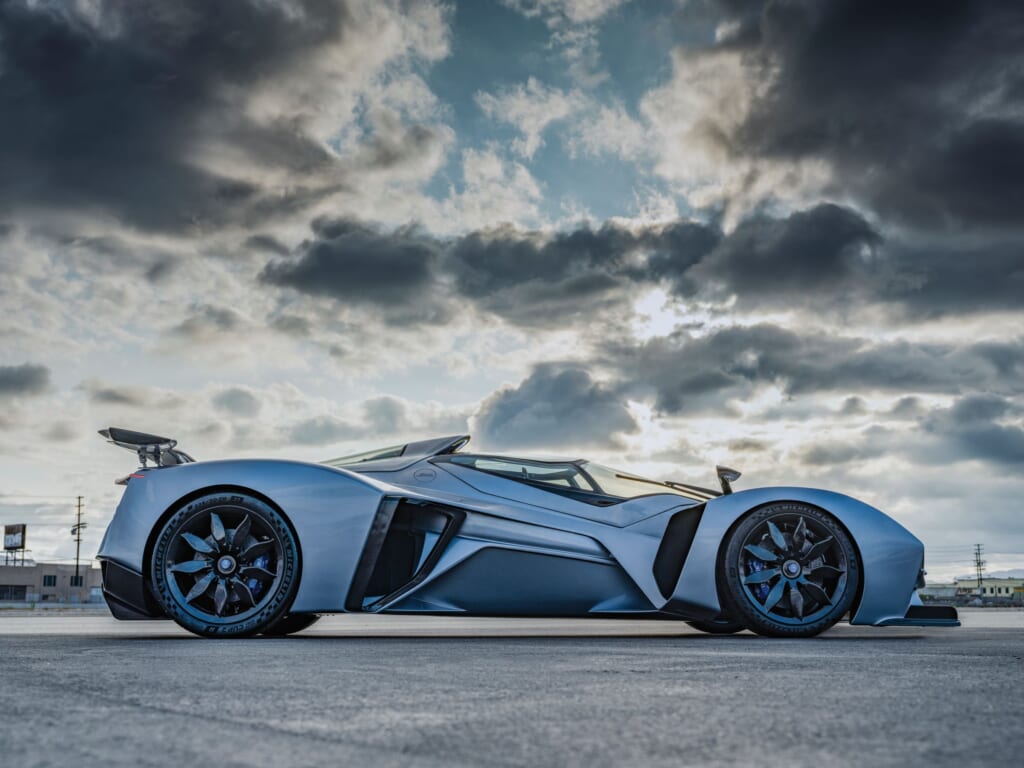
Luckily for Tapie the vehicle he wants to spearhead this gallic resurgence, his Delage D12, has all the ammo necessary to lead the charge. First off, the heavy artillery: grounded by a gargantuan 7.6-liter, 12-cylinder engine fully developed in-house, the naturally-aspirated lump’s 990-hp comes coupled to an electric motor with 110-hp of its own to create an asphalt-melting 1,100-hp.
Obviously developing an engine is an expensive and time consuming endeavor. But Tapie determined to engineer a big block to avoid bolting on any turbos or superchargers. “The golden years of Formula One to me were the years where you had the naturally aspirated V12 and this unique sound they had — I’m a bit nostalgic of this period,” he explains.
“Personally I feel that approximately 50% of the pleasure in driving is the sound, and if it is ruined by the whistling of a turbo or a compressor, well, that’s really a pity.”
The second singular aspect is its nimble feet: the D12 sports a very expensive and rare F1-style pushrod suspension, a system that revolutionized Formula One two decades ago but is still so cost prohibitive that no other hypercar utilizes one. And even if they could afford to, French engineer Mauro Biancchi, who holds the patent, granted Delage exclusive rights for road-legal cars.
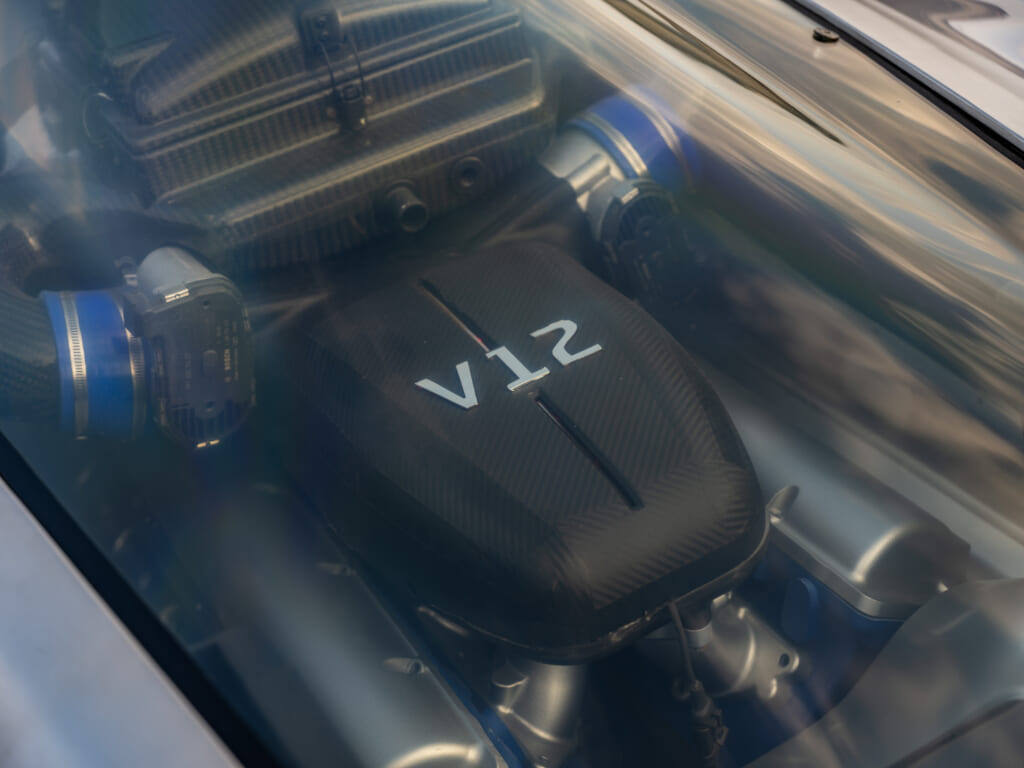
“Nobody else has it on a street legal car, so it was one of the cool things I wanted the D12 to have,” boasts Tapie. Finally there’s the D12’s most salient innovation: a central seating position. Its twin seats come positioned one behind the other, a fighter jet geometry that offers unparalleled balance and vision—separating the hypercar from just about everything but perhaps McLaren’s fabled F1.
When asked about the origins of his motorsport obsession, Tapie is quick to share: “The emotion has been there since I’m a boy,” he reveals, “because I’m truly passionate about cars.” The way he sees it racing since the age of 20 lends the CEO a big advantage—largely from how well he’s versed in the competition.
Despite being a longtime fan of Porsche, Ferrari, Lamborghini, McLaren, Aston Martin, et al, Tapie knew none quite appealed to him, at least not as a visionary and entrepreneur. He credits (blames?) the stratospheric standards he’s established for Delage on winning a Porsche-organized amateur race in 1996 where the first place prize was driving an actual Formula One car.
“It’s one of the best experiences I’ve had in my life,” he recalls wistfully, “and nothing I’ve ever driven since, even the very recent supercars that are 700- or 800-horsepower, can approach the feeling when I drove it.”
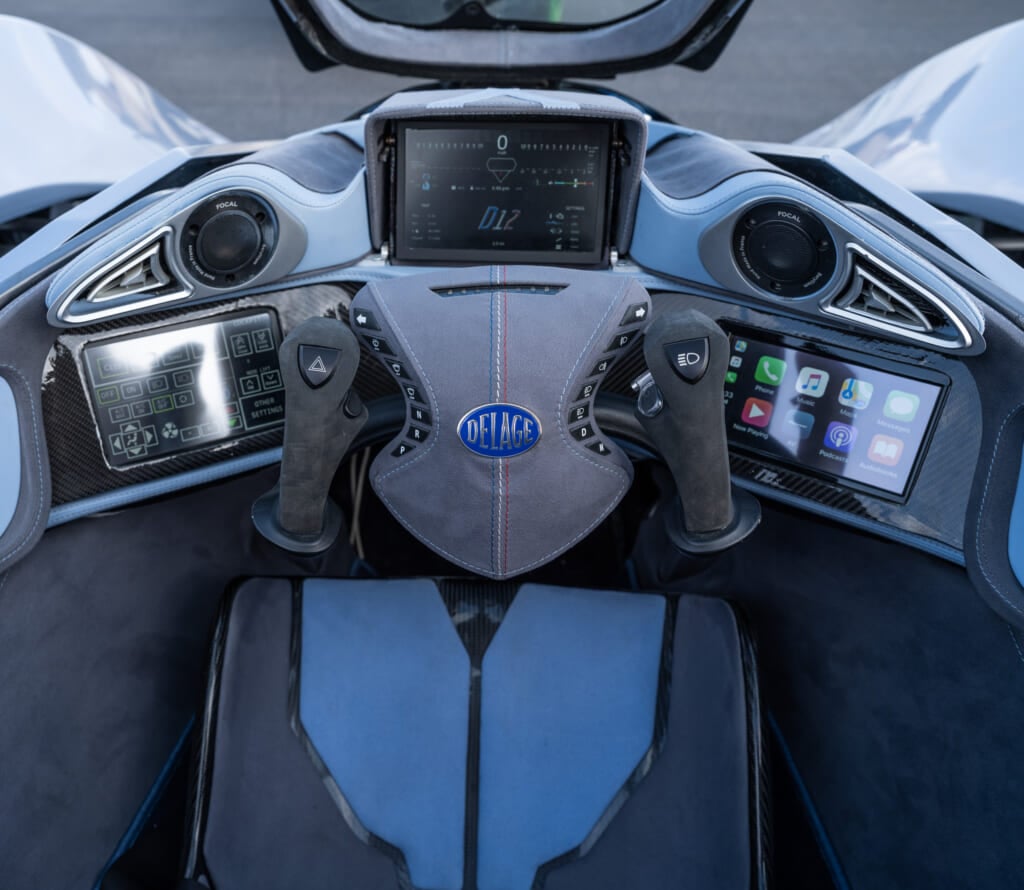
Palpably excited by the memory, he continues. “The will to create a kind of road-legal Formula One car was born that day, [though] honestly I never thought I would actually build one.” After a pauses he adds: “If you have ever driven a car from the central position, you never want to go back to a side of the car. I think the D12 will be the closest street-legal thing to a Formula One.”
D12 Dreams
Since the D12’s conception, its success has hinged on one single goal: setting the world record lap time around the Nurburgring. As arguably the most coveted accolade in the automotive landscape, lapping the Nürburgring’s Nordschleife holistically challenges a vehicle in a way that no other single metric can.
Notching this record would be final proof for Tapie that his D12 is worthy not only of the Delage name but of its robust heritage, and perhaps most importantly of waving the Tricolore flag.
“I am extremely confident that we’re going to beat [the record],” he states unwaveringly, “and we’re going to beat it by several seconds, not just one or two.”
This supreme confidence is built upon some of motorsport’s most basic tenets. Pointing out the D12 has more power than both the current (Mercedes-AMG GT Black Series) and previous (Lamborghini Aventador SVJ) record holder, it is also lighter than both, the prime combo of racing superiority.
Now throw in the pushrod’s unique suspension and the fact the hybrid hypercar has more than double the downforce of its competitors.
It’s clear the Frenchman seems to think he has all the necessary elements to turn this goal into reality. But raw ingredients won’t suffice; to prepare the D12 for this ultimate test, the final stage of the $2.3 million hybrid hypercar’s development will mean handing the keys over to famed F1 Champion Jacques Villeneuve.
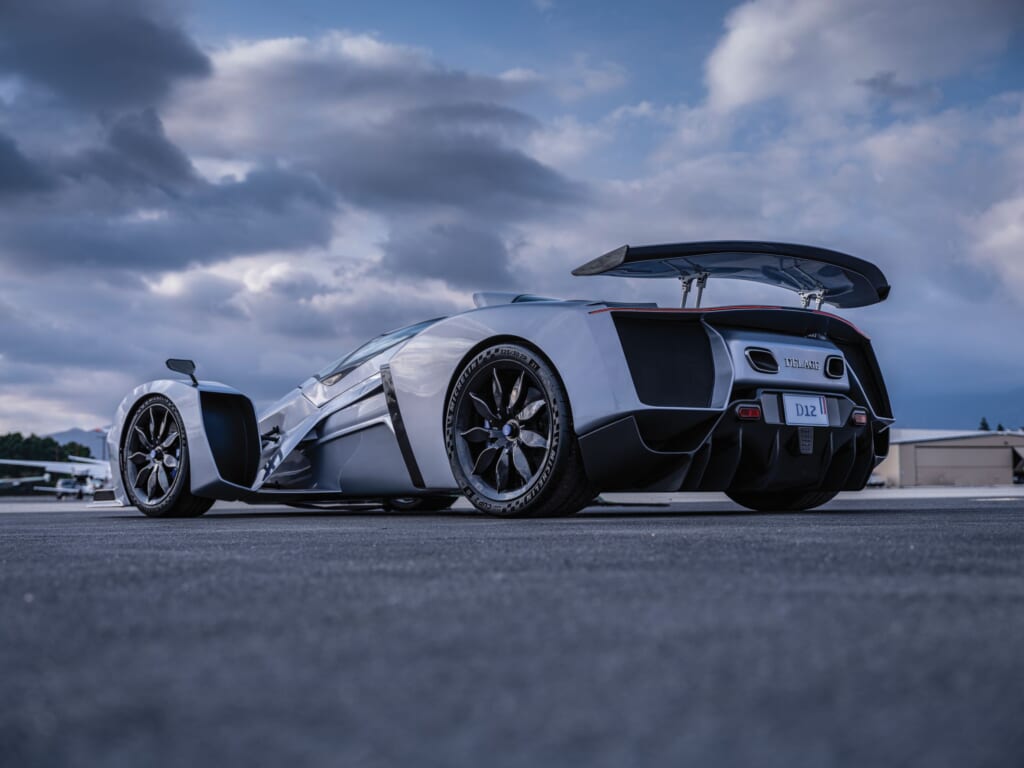
Simply because Tapie believes only a world-class driver—not an engineer—can orchestrate and balance all these parameters into one symphonic package.
Tapie learned this lesson from a vehicle he says is the best street car he’s ever driven: the Ferrari F430 Scuderia. The arguable G.O.A.T. of Formula One (all respect due to Lewis Hamilton) Michael Schumacher famously composed the balance of that super machine, and Tapie believes the difference between a driver- and an engineer-led setup is the reason for the F430 Scuderia’s epiphany.
“It’s very hard to explain but the Scuderia is a car that is alive. You make one lap with it and you end up with a smile on your face; you feel like the car and yourself are one body together,” he gushes. “I’ve never felt that in any other car, and that’s what I want from the D12.”
As only the third driver (after legends Mario Andretti and Emerson Fittipaldi) in all motorsports history to win a Formula One World Championship, the Indianapolis 500 and the CART/IndyCar Championship, Villeneuve is the one man Tapie believes can get the job done.
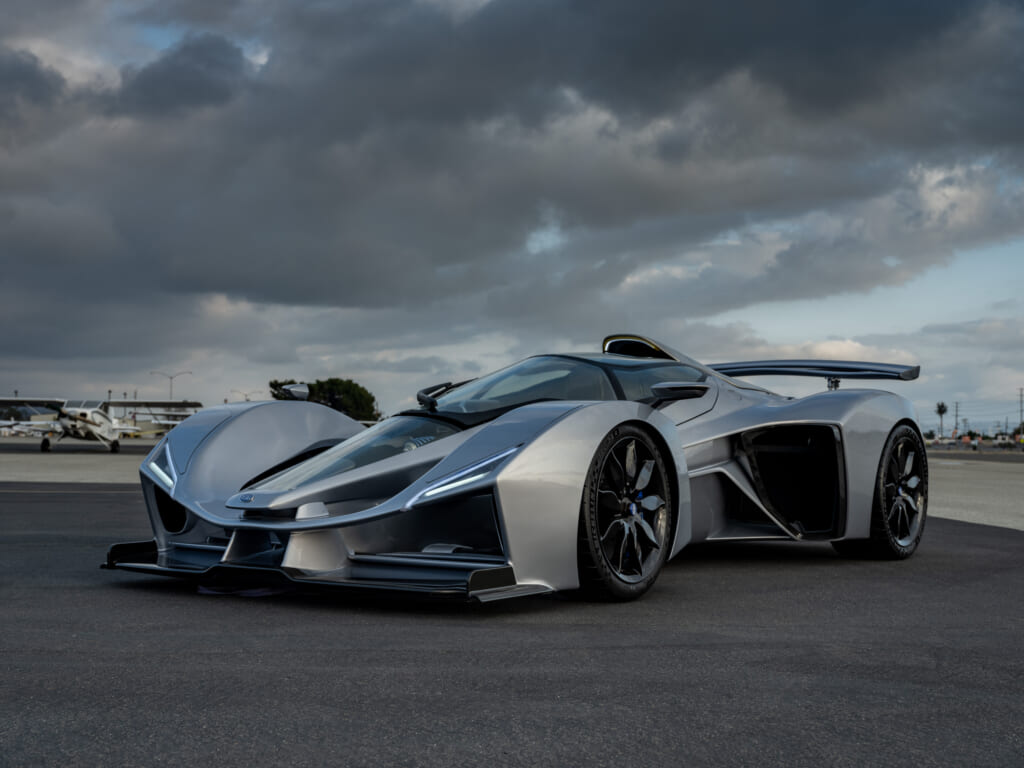
“Jacques has a very great knowledge and feeling of the cars,” he muses. “One of the reasons he was World Champion and was able to beat Michael Schumacher was because he has this strategy: he knows how to get the best from his car, and how to make the setup so him and the car can be one together.
“So that’s what I want him to do with the Delage. I will be happy once he gets out of the D12 and he says, Now, it feels like a Formula One car.”
This past August the D12 finally made its American debut at the Monterey Car Week, and as expected the otherworldly hypercar left many a potential customer slack-jawed.
“We received many more people than we expected, with an incredible enthusiasm on the design—many visitors told us the D12 was the most beautiful car shown this year,” Tapie shares happily. “I was thrilled to hear some visitors saying ‘I did not know Delage but a friend saw your car and told me I had to come by your stand.’”
The fully functional D12 prototype will be shown early this year, with clients in Europe testing the car first followed by America. As orders are confirmed, D12s will be configured in spring with first deliveries scheduled for Q1 of 2023. “Perhaps most importantly than the reception in Monterey was we pre-sold several cars—which of course was the primary objective.”






